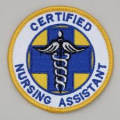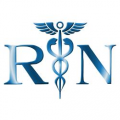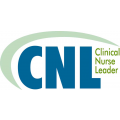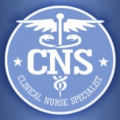Over 1.4 million certified nursing assistants (CNAs) are employed across the country. Nearly 70 percent of these professionals work in nursing care facilities and hospitals. The rest work at continuing care retirement communities, assisted living facilities for the elderly, home healthcare services, employment services, and specialty hospitals. The largest CNA populations are found in New York, California, Florida, Texas, and Pennsylvania.
Nursing roles and specializations
Nursing professions run the gamut, from one-on-one bedside care to complex organizational management. Below we've descibed the key aspects of both junior (CNA, LPN / LVN) and senior (RN, APRN) nursing roles. We've also profiled a range of popular specializations for nurses with advanced qualifications.
Registered nursing specializations
Advanced practice nursing roles
The U.S. is home to more than 150,000 advanced practice registered nurses (APRNs). These professionals comprise the upper echelon of the nursing industry; all have graduate-level education, and many hold a doctorate. Approximately 110,000 of these APRNs are nurse practitioners. According to the International Council of Nurses, a nurse practitioner demonstrates the expert knowledge, complex decision-making skills, and clinical competencies for expanded nursing practice. Not surprisingly, nurse practitioners are very well compensated.
Nurse practitioners are the largest group of advanced practice registered nurses (APRNs), and their population is growing rapidly. Employment of nurse practitioners will increase 34 percent over the next ten years, driving the number of nurse practitioners from the current 110,000 to almost 150,000. They earn some of the highest salaries in the healthcare industry as well. The typical nurse practitioner earns approximately $93,000 per year, and the top quartile receives over $110,000 in annual pay.
Nurse practitioners are the nation’s largest group of advanced practice registered nurses (APRNs), with more than 110,000 licensed professionals. According to the Bureau of Labor Statistics, nurse practitioner employment will increase by 34 percent over the coming decade, a growth rate much faster than average. Pay is very attractive as well. With a median annual salary of $93,000, nurse practitioners are among the highest-paid nurses in the healthcare field. Top performers can earn more than $110,000 per year.
The U.S. is home to more than 110,000 nurse practitioners (NPs). They represent the nation’s largest group of advanced practice registered nurses (APRNs), and the population is growing. According to the Bureau of Labor Statistics, NP employment will increase 34 percent during the next decade, much faster than the average for all occupations. Salaries are impressive as well. Nurse practitioners earn a median annual salary of $92,670, with top-quartile pay in excess of $110,000 per year.
The U.S. is home to more than 150,000 advanced practice registered nurses (APRNs). Nurse practitioners (NPs) form the largest APRN specialty, with 110,000 professionals nationwide. Nurse practitioner employment will grow at a 34 percent clip over the next decade, fueled by federal health insurance reform and the demands of an aging Baby Boomer generation. However, this growth will also occur because APRNs are performing more services independently. Indeed, APRNs are increasingly recognized by the public as a source for primary healthcare. This is especially true in family practice.
The U.S. is home to more than 110,000 nurse practitioners (NPs), and this population is growing at a rapid pace. NP employment is expected to grow by 34 percent over the coming decade, adding 37,000 new jobs in the field. Several factors are driving this increased healthcare demand, including federal health insurance reform and the needs of an aging Baby Boomer generation. Indeed, some nurse practitioners specialize in care for the aged, especially those with chronic and acute conditions. These advanced practice nurses are known as adult-gerontology nurse practitioners.
With a population of more than 110,000, nurse practitioners (NPs) are the largest group of advanced practice registered nurses (APRNs) in the United States. They work primarily in physicians’ offices and hospitals, where they collaborate with other health professionals to provide the best primary and specialty advanced nursing care to patients. Because they are registered nurses (RNs), nurse practitioners can perform the full range of RN responsibilities.
Clinical nurse specialist (CNS) is a type of advanced practice registered nurse (APRN). The CNS provides direct patient care within a population-specific practice such as pediatrics, geriatrics, oncology, or orthopedics. Clinical nurse specialists partner with individual healthcare teams to improve their patient care. They also work at the system or organizational level to improve the quality of nursing care throughout a facility related to their specialty. Some CNSs have a doctorate degree, which allows them to conduct research.
Nurse anesthetists, also known as certified registered nurse anesthetists (CRNAs), are the highest-paid professionals in the nursing field. They earn a median annual salary of $150,000. The top 25% of CRNAs are paid more than $180,000 per year. Salaries are high because the work of nurse anesthetists is delicate and the required skill set is broad. Qualified CRNAs are thus in high demand. The Bureau of Labor Statistics expects employment growth of 25 percent over the next decade, increasing the nurse anesthetist population from 35,000 to 44,000.
Nurse midwife is one of four advanced practice registered nurse (APRN) specializations. Also known as a certified nurse midwife (CNM) or certified midwife (CM), the nurse midwife is a primary care provider for women and newborns. She cares for women during labor and delivery, and she provides gynecological exams, prenatal care, and family planning services. Midwives also offer wellness care for mothers and newborns, and they diagnose and treat sexual or reproductive health issues for patients’ partners.















